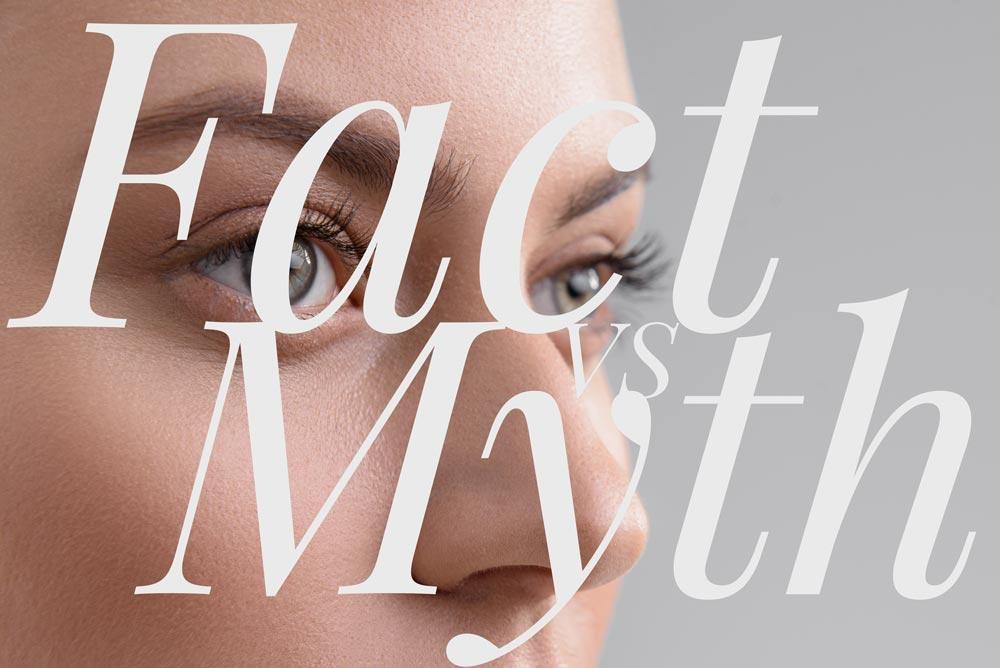
Nasal Surgery
One of the biggest misconceptions is that just about any nose that you desire can be accomplished with the right surgeon. While it is true that experience, technical expertise and aesthetic judgment vary among surgeons, there are certain limiting factors that no surgeon can overcome. Chief among these is thickness and quality of the skin. The thicker the skin, the less likely it is that it will re-drape to a smaller, more angular framework. Various techniques such as cross-hatching the dermis, injecting with steroids and other medications such as 5-FU, prolonged casting or nightly taping and the use of Accutane to diminish the oil glands in the skin have been used with variable success. Additionally, as one ages there is a loss of elasticity in the skin making it harder to shrink-wrap down onto a reshaped bony-cartilaginous framework. Since the skin over the upper one half of the nose is thinner with less oil glands, it is more capable of conforming than the skin over the lower half. Additionally, since the lower half skin will shrink to the smallest volume for its surface area, which is a sphere, we tend to see a rounded lower half of the nose if too much bone and cartilage has been removed for the skin to adapt. This is called the “pollybeak” deformity.
Another misconception is that breaking the nose makes the operation more painful with a longer recovery period. In actuality, nasal surgery is usually painless or minimally painful in the post-operative period, whether or not breaking of the bones was necessary. And it’s been my experience that recovery time is unchanged in either case. Furthermore, I have seen people bruise without bone breaking and no bruising in some patients who required it. It seems more related to capillary fragility, hormonal balance and/or medications or herbal products that they were taking.
Another misconception is that there are some things that can’t be corrected on the nose, such as nostril asymmetries and their facial attachments . Since wide variation exists between surgeons regarding experience and abilities, it is wise to go to several surgeons if you are told that something can’t be done. It might just mean that this particular surgeon can’t do it!
Another misconception is that you will have no idea what your nose will look like until six to twelve months have passed. While it is true that swelling and settling can take weeks or months to resolve, it has been my experience that you should have a rough idea of what your nose will look like in the immediate post-operative period. Obviously, there are many variables that play into this, such as skin thickness, techniques used, post-operative care, etc.
Another misconception is that very “difficult” noses require two operations. While it is true that minor revisions or “tweaking” a result may be warranted in 5%-10% of the time, most of the time all that is needed can be accomplished in one operation.
A final misconception is that a surgeon who performs rhinoplasty can also perform revision rhinoplasty or reconstructive rhinoplasty. In actuality, it’s usually just the reverse. In revision rhinoplasty, the surgeon is trying to establish an aesthetic result in a nose that was operated on with a poor outcome. Like the first surgeon, he is trying to achieve a nose that is better than it was initially…that is, taking a normal nose and making it “better than normal”. However, in this case there is additional internal scarring, misplaced or absent tissue, shrinkage of internal lining and maybe external scarring as well. In reconstructive rhinoplasty, the surgeon is trying to establish a normal appearing nose from one that is less than normal, from a cancer procedure or trauma. The techniques used may require skin flaps or grafts as well as cartilage or bone from several sources. The internal arrangement of these components may have no resemblance to what normal nasal anatomy is. However, the goal is to establish a nose that looks relatively normal and functions well.
